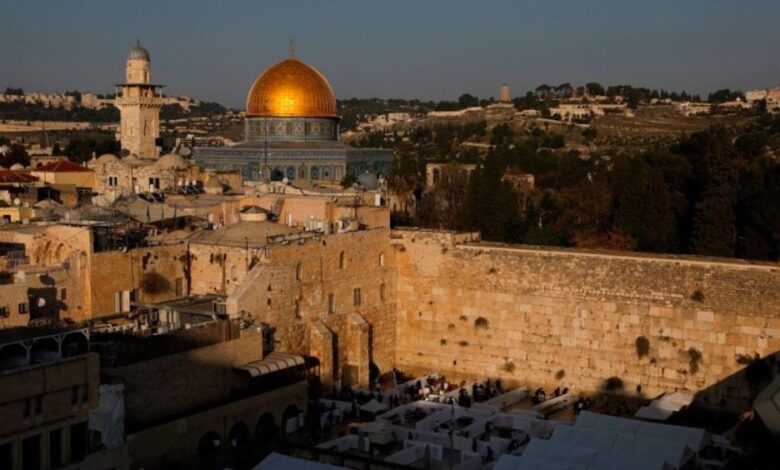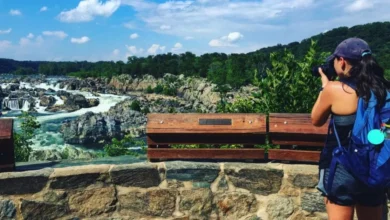Holy City Sinner: The Intersection of Sacred and Profane

Introduction: The Duality of Urban Spirituality
In the tapestry of human civilization, cities have always been more than just concrete and steel; they are complex amalgamations of culture, belief, and contradiction. The term Holy City Sinner conjures images of sanctity and reverence, places where the divine is believed to touch the earth. Yet, in the very same breath, these cities are often hotbeds of vice, temptation, and moral ambiguity. This paradox gives rise to the concept of the “Holy City, Sinner,” where the sacred and the sinful coexist in a dynamic interplay. This article delves into the fascinating juxtaposition of holy cities and their Holy City Sinner facets, exploring historical, cultural, and spiritual dimensions.
Historical Context: The Evolution of Holy City Sinner Sacred Cities

The Origins of Sacred Urban Centers
The evolution of holy cities can be traced back Holy City Sinner to ancient civilizations, where urban centers were not just administrative hubs but also spiritual epicenters. Cities like Jerusalem, Mecca, and Varanasi have long held significant religious importance. Their streets have witnessed profound religious rituals and debates, shaping their sacred status. In ancient times, these cities were seen as the earthly reflection of divine realms. The sacredness was not just in their temples or shrines but also in their very layout and the cosmic order they were believed to represent.
For instance, Jerusalem’s significance in Judaism, Christianity, Holy City Sinner and Islam showcases its pivotal role in religious history. Its walls have been the backdrop to pivotal events and divine revelations, making it a focal point of spiritual devotion and conflict. Similarly, Mecca, with its Kaaba, Holy City Sinner serves as the spiritual heart of Islam, drawing millions of pilgrims each year. These cities were more than religious landmarks; they were living embodiments of divine principles and human aspirations.
Sacred Cities in Antiquity
In antiquity, the concept of a holy city was deeply intertwined with the divine right of kings and rulers who often claimed to rule by divine mandate. This created a unique blend of political and spiritual authority that shaped the governance and societal norms of these cities. The sacredness of these urban centers was both a reflection of their divine endorsement and a means of legitimizing earthly power.
For example, ancient Egyptian cities like Thebes were not only political Holy City Sinner capitals but also significant religious centers, housing temples and monuments dedicated to gods. The city’s layout and architecture were designed to honor the divine, showcasing the deep connection between religion and urban planning in ancient times. This blend of sacred and secular power set the stage for the complex relationship between holy cities and the sins they often harbored.
Modern Interpretations of Sacred Cities
In modern times, the concept of the holy city has evolved, but the underlying duality remains. Cities like Rome, with its rich Christian heritage, or Varanasi, revered in Hinduism, continue to attract millions of pilgrims and tourists. However, these cities also face the challenges of modern urbanization, including crime, corruption, and moral decay. The juxtaposition of their sacred status with contemporary issues highlights the ongoing tension between spiritual ideals and worldly realities.
Rome, for instance, is not just the seat of the Vatican but also a bustling metropolis with its share of modern vices. The sacred and profane coexist in a city that has long been a center of both spiritual reverence and political intrigue. Similarly, Varanasi, while holding a revered place in Hinduism, faces the challenges of modern urban life, including poverty and pollution. This duality reflects the complex nature of holy cities in the contemporary world.
The Spiritual Paradox: Divine Cities and Human Imperfection
Sacred Spaces and Human Nature
The paradox of the holy city lies in the coexistence of sacred spaces and human imperfection. Religious teachings often emphasize the pursuit of virtue and the avoidance of sin. However, the reality of human nature is far more complex. Cities that are considered sacred often become arenas where the struggle between spiritual aspirations and human flaws Holy City Sinner plays out. This tension is evident in the lives of individuals who inhabit these cities, as well as in the broader societal dynamics.
For instance, Jerusalem’s significance as a center of worship is Holy City Sinnerjuxtaposed with its history of conflict and violence. The very streets that are walked by pilgrims seeking spiritual enlightenment have also been the sites of strife and discord. This duality reflects the broader human experience, where the quest for spiritual fulfillment is often marred by moral and ethical Holy City Sinner challenges.
Religious Teachings vs. Urban Realities
Religious teachings often portray holy cities as places of pure devotion and Holy City Sinner righteousness. Yet, the urban reality presents a more nuanced picture. In cities like Mecca, while the pilgrimage and religious practices are central to the city’s identity, there are also issues of social inequality and economic disparity that challenge the idealized image of a purely sacred space.
This discrepancy between religious ideals and urban realities highlights the Holy City Sinner challenges of maintaining spiritual purity in a world characterized by complexity and imperfection. The holy city becomes a microcosm of the broader human condition, where the pursuit of Holy City Sinner virtue is continuously tested by the realities of everyday life.
Spiritual Redemption and Urban Challenges
Despite the imperfections, holy cities often provide pathways for spiritual redemption and transformation. The very challenges and sins encountered in these cities can become opportunities for personal and communal growth. The process of confronting and overcoming moral dilemmas in a sacred context can lead to profound spiritual insights and transformations.
In cities like Varanasi, the act of pilgrimage and ritual purification is not just Holy City Sinner about seeking divine favor but also about engaging with the complexities of human existence. The rituals and practices offer a means to navigate the moral ambiguities of urban life, providing a framework for spiritual growth and redemption. This interplay between sin and sanctity Holy City Sinner underscores the transformative potential of holy cities.
Cultural Dynamics: The Sacred and the Profane in Everyday Life
Religious Festivals and Urban Celebrations
Religious festivals in holy cities often serve as a vibrant display of the Holy City Sinner sacred and the profane. These celebrations bring together communities in a shared expression of faith, while also highlighting the complexities of urban life. Festivals such as Diwali in Varanasi or Ramadan in Mecca showcase the rich cultural tapestry of these cities, blending spiritual devotion with communal festivity.
During Diwali, Varanasi transforms into a city of lights, with streets and temples Holy City Sinner adorned in vibrant colors. The festival, while deeply spiritual, also involves commercial activities and social gatherings that reflect the dynamic interplay of sacred and secular life. Similarly, Ramadan in Mecca is marked by profound spiritual observance and communal solidarity, juxtaposed with the bustling activities of pilgrims and residents. These festivals illustrate how holy cities balance religious devotion with the vibrancy of urban culture.
Everyday Life in Sacred Cities
The daily lives of individuals in holy cities often reflect a complex mix of spiritual devotion and everyday challenges. For many, living in a sacred town means navigating the demands of religious practice and urban existence. This duality is evident in the routines of daily life, where individuals balance their spiritual commitments with the practicalities of modern living.
In Jerusalem, for instance, the daily rhythm of life is influenced by religious observances and the city’s historical significance. The coexistence of diverse religious communities adds layers of complexity to daily interactions, reflecting the broader tension between sacred ideals and urban realities. Similarly, in Rome, the presence of the Vatican influences both the city’s spiritual atmosphere and its secular dynamics, shaping the experiences of residents and visitors alike.
The Role of Tourism in Sacred Cities
Tourism plays a significant role in shaping the cultural dynamics of holy cities. Pilgrims and tourists contribute to the economic vitality of these cities, while also influencing their social and cultural landscape. The influx of visitors often brings a mix of reverence and commercialism, highlighting the tension between maintaining sacred traditions and accommodating modern tourism.
In Mecca, the annual Hajj pilgrimage is a central aspect of the city’s identity, drawing millions of Muslims from around the world. The experience of pilgrimage is deeply spiritual, yet the logistical and economic aspects of accommodating such a large influx of people introduce elements of commercialism and modernity. Similarly, in cities like Jerusalem and Rome, tourism affects the preservation of sacred sites and the daily lives of residents, reflecting the ongoing negotiation between spiritual heritage and contemporary realities.
Sociological Perspectives: The Impact of Sacred Urban Centers
Social Stratification and Sacred Cities
Holy cities often exhibit unique patterns of social stratification, influenced by their religious significance. The presence of sacred sites and the influx of pilgrims can create distinct social hierarchies, shaping the experiences of residents and visitors. These social dynamics reflect the broader interplay between religious devotion and socioeconomic factors.
In Jerusalem, for example, the proximity to sacred sites can influence social status and access to resources. The presence of religious institutions and the impact of pilgrimage contribute to the social stratification of the city, affecting the lives of both locals and visitors. Similarly, in Varanasi, the religious significance of the city intersects with social and economic inequalities, shaping the experiences of different communities.
The Role of Religious Institutions
Religious institutions in holy cities play a crucial role in shaping their social and cultural landscape. These institutions often act as centers of spiritual guidance, community support, and social welfare, influencing the lives of residents and visitors. The activities and priorities of religious institutions reflect the broader tensions between sacred ideals and urban realities.
In Mecca, the custodianship of the Kaaba and the management of pilgrimage activities are central to the city’s religious and social dynamics. The institutions responsible for these activities play a key role in maintaining the spiritual significance of the city while addressing the logistical and social challenges of hosting millions of pilgrims. Similarly, in Rome, the Vatican’s influence extends beyond religious matters, impacting the city’s cultural and social fabric.
Urbanization and Sacred Spaces
The process of urbanization presents challenges to the preservation of sacred spaces in holy cities. As cities expand and modernize, the tension between maintaining historical and spiritual sites and accommodating contemporary needs becomes increasing.




